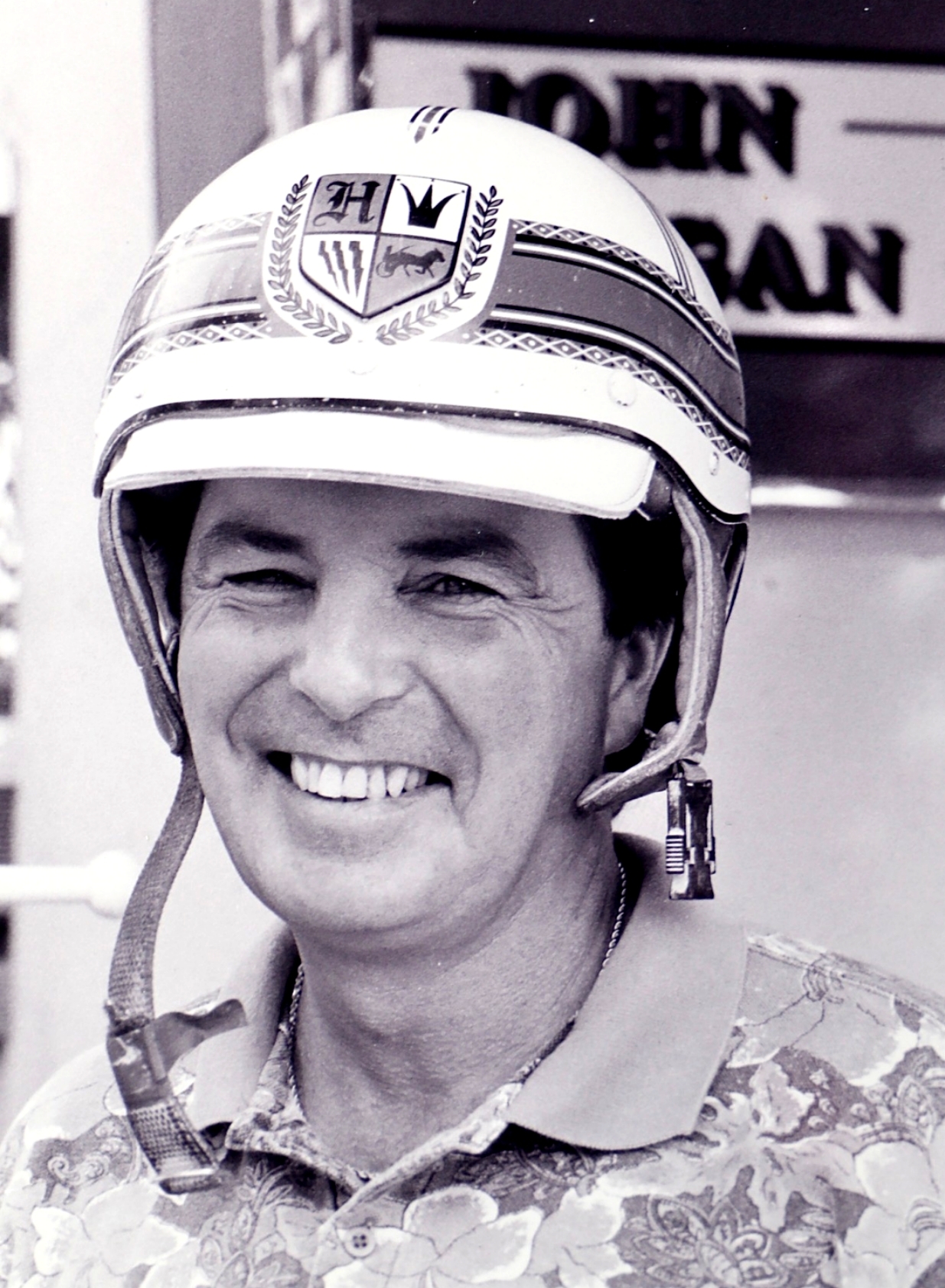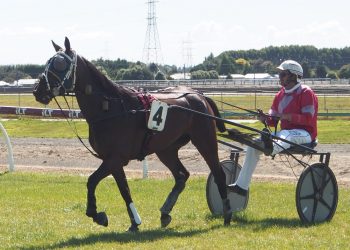Plainville, MA — The sport of harness racing lost one of it’s longtime stars on Friday (July 2) when John Hogan passed away in Glens Fall, New York. The Marlboro

ugh, Massachusetts native was first and foremost a devoted family man, but to the millions of fans who watched him race over his 50-year career, he will be remembered as one of the greatest horsemen to ever come out of the Commonwealth.
Hogan started out his professional life as a school teacher, but with his
love of horses and his father’s involvement in the sport, it didn’t take long for him to switch vocations.
Hogan was first licensed in 1962 at the age of 19 but it took a few years before he started driving. But when he did his career change paid off huge dividends.
Hall of Fame driver Bill O’Donnell recalled Hogan’s start in the business.
“I remember the first real good horse he had was Royal Joseph in the early 1970’s that he raced at Foxboro. He was just a cheaper claimer in overnights but he won
a lot of races and gave John a lot of attention. From there he started gaining drives and having a lot of success,” said O’Donnell.
Royal Joseph won 14 races for Hogan in 1973 and set the stage for many more victories to come.
Hogan raced at tracks all across New England including Hinsdale, Rockingham, Scarborough and Lewiston. But his biggest break came when the Meadowlands opened in 1976.
“When the Meadowlands opened, Jim Doherty and Ted Wing were the dominant drivers at Foxboro and they both relocated to race there. That opened up a lot of opportunities for other drivers racing at Foxboro. John was one of them and he took full advant
age of it. He soon became the top man in Massachusetts and set records there that stood until that track closed,” said O’Donnell.
Hogan became the all-time leading driver of 2:00 miles at Foxboro, amassing a total of 78 in his career. While the track was still open, he was referred to as Mr. Foxboro by many fans and media people due to his dominance at the oval.
With success came change and Hogan saw that with the quality of his stock and where they competed.
Hogan started importing horses from Australia and New Zealand and found success racing them in overnight events. But he also started developing young horses and com
peted successfully for many years on the Grand Circuit.
Some of his most notable wins came with horses like Hillbilly Ore (Keystone Ore-Cathie Hill 1:55.4, $366,771) who was one of the toughest overnight campaigners in New England and a perennial Invitational competitor at Foxboro Park. A 69-time winner, he raced until he was 14-years-old and saw much of his success with Hogan at the helm.
Another notable was Cindy’s Action (Speed In Action-Cindy Coaltown 1:57.3, $223,406) who Hogan finished third with behind Grades Singing in track record time of 1:58.3 at Northfield Park in the 1987 Breeders Crown for aged trotting mares.
Hogan also teamed Silent Spring (On The Road Again-Castleton Spring
1:50.1, $981,177) and won the 1992 3-year-old Matron Stake at Pompano beating Fake Left, along with winning many Invitationals there as well.
But his most notable accomplishment was developing and driving Go Get Lost (Speedy Somolli-Chit Chat 1:54.3, $1,197,467) in the 1987 Hambletonian.
During his 3-year-old campaign in 1987, Go Get Lost was based in Maryland with trainer Art Wirsching and was routinely beating older Open trotters in overnight races at Freestate Raceway and Rosecroft Raceway. But he also had his share of success in stake action as well.
With Hogan aboard, Go Get Lost won the New Jersey Sire Stake final at the Meadowlands and also the Statue of Liberty trot, where he was the only 3-year-old pitted against aged trotters. In that race he powered late from tenth in mid-stretch to win in 1:56 and take a new lifetime mark.
In a post-race interview Hogan said “It’s a big thrill to drive a top 3-year-old trotter. It’s more pleasurable to drive a good trotter because you can feel the power in their legs. Coming into this race we weren’t sure this horse belonged. What we were most concerned about was we didn’t want to get him hurt and jeopardize his future this year.”
His future in 1987 was a date with the great Mack Lobell in the $1 million Hambletonian.
Mack Lobell (John Campbell) easily won his first heat and Go Get Lost finished fourth in his behind Napoletano (Bill O’Donnell), who he traded blows with for much of the mile. When they lined up for the second heat, Mack Lobell was 1-9 and although he didn’t win, Go Get Lost was the public’s second choice at 5-2.
Mack Lobell cut the mile with Waikiki Beach (Jim Doherty) alongside parked and pushing the pace. Go Get Lost (who left from post seven) was parked out in traffic the entire mile, interfered with and pushed three-wide off the last turn. Mack Lobell turned back the early challenge and trotted away from the pocket-sitting Napoletano in the stretch to win by 6-1/4 lengths in 1:53.3, just 1/5th of a second off the world all-age trotting record. Go Get Lost finished fourth in a valiant effort.
During his driving career John Hogan won 4,711 races and banked $12,884,944 in purses. As a trainer Hogan saw 867 of his students win and account for another $3,300,261 in earnings. All told he was responsible for sending 5,578 horses to the winner’s circle and enriched their connections to the tune of $16,185,205. His career high for driving wins came in 1978 when he scored 335 and his best year for earnings came in 1987 when he pocketed $743,914 in purses.
After the Grand Circuit Hogan continued to race full time in New England where he was a regular at Plainridge Park until 2015 when he retired from the business.
Some of the greatest harness horsemen in history started their careers in New England before going on to reach the heights of the sport and John Hogan had certainly done that. Known across North America for decades, Hogan will always be remembered for his accomplishments on the track and contributions to the sport.
by Tim Bojarski, for Plainridge Park

 USA
USA Canada
Canada Australia
Australia New Zealand
New Zealand Europe
Europe UK / IRE
UK / IRE



